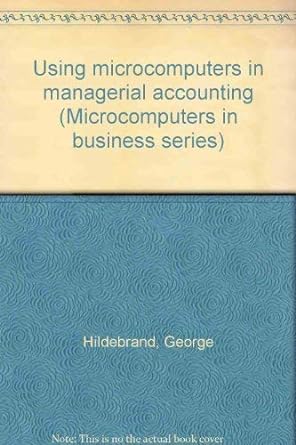Question
You are currently planning an investment strategy designed to partially finance your eight-year-old child's education. You have $10,000 to invest and your child will begin
You are currently planning an investment strategy designed to partially finance your eight-year-old child's education. You have $10,000 to invest and your child will begin university studies ten years from now. Your financial advisor recommends that you buy some Telstra shares. Telstra shares have a beta of 0.9 and the returns on Telstra shares have a standard deviation of 40% p.a. The riskless rate of interest is 5% p.a. and the market risk premium is 7% p.a. The standard deviation of the return on the market is 20% p.a.
If you follow the advice of your financial advisor, how much do you expect to have available when
your child begins university?
You become aware that your bank is marketing an Australian Equities Index Fund. The goal of this fund is to exactly match the performance of the All Ordinaries Index (a broad stock market index). If you invest in this fund, rather than the Telstra shares, how much do you expect to have available when your child enters university?
Finally, a colleague suggests that you shouldn't limit yourself to choosing between investing everything in Telstra or everything in the index fund. He suggests that you can do even better by diversifying. In particular, he suggests an equally-weighted portfolio consisting of $5,000 invested in Telstra shares and $5,000 invested in the index fund. What do you think about your colleague's advice?
Step by Step Solution
There are 3 Steps involved in it
Step: 1

Get Instant Access to Expert-Tailored Solutions
See step-by-step solutions with expert insights and AI powered tools for academic success
Step: 2

Step: 3

Ace Your Homework with AI
Get the answers you need in no time with our AI-driven, step-by-step assistance
Get Started


